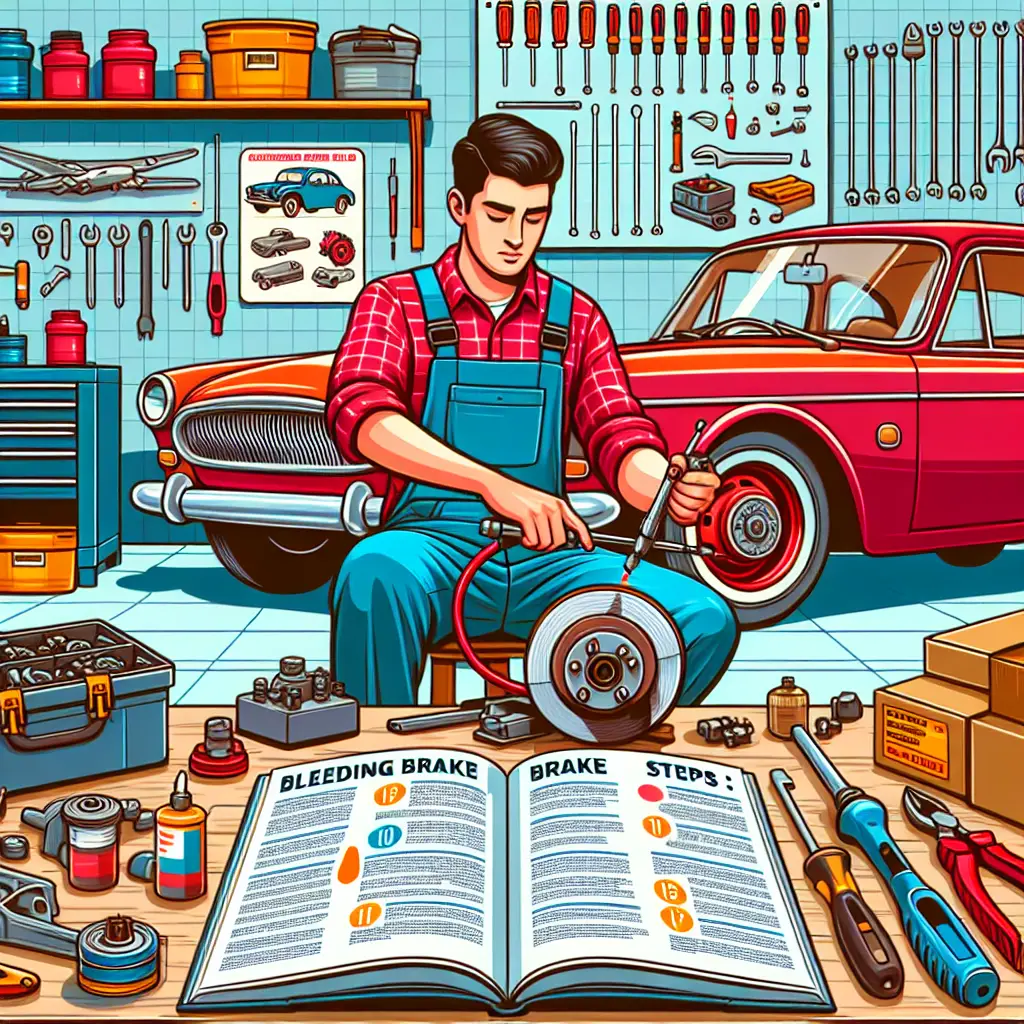What is the Correct Order to Bleed Brakes: Expert Tips for Maintaining Your Vehicle’s Stopping Power
There’s little argument that the quality of your car’s braking system is vital to your driving experience and safety on the road. An integral part of maintaining that braking system is the process known as bleeding the brakes. In this comprehensive guide, I’ll walk you through the correct order to bleed brakes, ensuring that you keep your vehicle in top-notch condition and safeguard your journeys.
Why Bleed Your Brakes?
Firstly, let’s understand why this process is essential. Bleeding your brakes is necessary to remove air bubbles from the brake lines. Air can compress, unlike brake fluid, and this compressibility can lead to a spongy-feeling brake pedal, which reduces the efficacy of your braking system and can be a safety hazard. Regular bleeding helps maintain the integrity of your braking system – it’s a crucial aspect of vehicle maintenance that you shouldn’t overlook.
The Correct Order to Bleed Brakes
When it comes to bleeding brakes, the order is almost as important as the procedure itself. Here’s the recommended sequence:
Step 1: Understand the Correct Wheel Order
Most mechanics agree that you should start with the wheel furthest from the master cylinder and work your way to the closest. Typically, for most left-hand drive vehicles, the order is:
- Right Rear
- Left Rear
- Right Front
- Left Front
This sequence may vary for right-hand drive cars or those with different brake line configurations, so consult your vehicle’s service manual for the precise order.
Step 2: Prepare Your Vehicle and Gather Tools
Before you begin, ensure that your car is on a flat surface and is safely supported by jack stands. You’ll need a wrench that fits your vehicle’s bleeder valves, a length of clear tubing to fit over the nipple of the bleeder valve, a brake bleeder kit or a clean, clear bottle to catch old fluid, and of course, quality brake fluid. Check your owner’s manual for the correct type of fluid.
Step 3: Bleed Each Brake
For each brake, the process is similar:
- Remove the wheel to access the brake caliper and the bleeder valve.
- Place one end of the clear tubing over the bleeder valve and the other end into a container to catch the old fluid.
- Have an assistant press the brake pedal and hold it down while you open the bleeder valve slightly.
- Fluid will flow through the tube – watch for bubbles, which are signs of air in the line.
- Tighten the valve before your assistant releases the brake pedal to prevent air from being sucked back into the system.
- Repeat this process until no more air bubbles are visible in the fluid exiting the tube.
During this procedure, keep a close eye on the brake fluid level in the master cylinder reservoir. Replenish it with new fluid as needed to prevent air from entering the system.
Step 4: Test Your Brakes
Once all the brakes have been bled, test your brake pedal for firmness while the vehicle is still jacked up. If the pedal is still spongy, you might have to repeat the bleeding process or check for other issues.
Common Mistakes to Avoid When Bleeding Brakes
While bleeding brakes is a straightforward process, it’s not without potential pitfalls. Here are a few common mistakes to avoid:
- Not keeping the master cylinder reservoir full: Allowing the master cylinder to run dry can introduce air into the system, setting you back to square one.
-
Over-tightening the bleeder valves: This can strip the threads and cause leaks, resulting in more repairs.
-
Allowing the brake fluid to get contaminated: Avoid exposing brake fluid to air for too long; it’s hygroscopic, meaning it readily absorbs moisture, which can degrade its performance.
When to Seek Professional Help
If you’re uncomfortable with bleeding your brakes or encounter issues such as a damaged bleeder valve or a master cylinder that needs attention, it’s time to seek professional help. Professional mechanics can perform this procedure quickly and efficiently, and they can also address any related issues you might not be equipped to handle.
Conclusion
Bleeding your brakes is an essential part of routine maintenance that ensures your vehicle remains safe and responsive on the road. By following the correct order and avoiding common mistakes, you can maintain your brake system’s performance and longevity.
As always, if you need professional advice or find that this process is beyond your skill set, reach out to a reputable mechanic. Resources like Consumer Reports can offer guidance on car maintenance, while organizations like ASE can help you find certified professionals. Remember, regular maintenance is not just about performance; it’s about safety.
Stay tuned for more automotive tips to help you stay informed and your vehicle in peak condition. Whether it’s time for brake service or you’re tackling other maintenance tasks, knowledge is power – keep driving safely!

